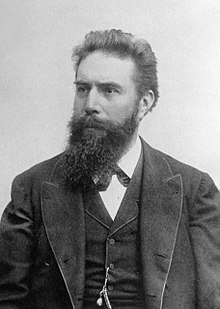Ever wonder who invented the X-ray? This upcoming week, on November 8th, 2020 Wilhelm Rontgen unintentionally detected the electromagnetic radiation known today as the x-ray.
Written content by News Without Politics, NWP World News

He was working with beams of electrons when he realized that he could see the outlines of his bones. This accident actually won him the Nobel Peace Prize. He decided to call this mysterious new wavelength X-ray since it had no official name. It is also called Röntgen rays today,

Wilhelm Conrad Roentgen (1845-1923), a Professor at Wuerzburg University in Germany. While working with a cathode-ray tube in his laboratory, he observed a fluorescent glow of crystals on a table near his tube. The tube that Roentgen was working with consisted of a glass envelope (bulb) with positive and negative electrodes encapsulated in it. The air in the tube was evacuated, and when a high voltage was applied, the tube produced a fluorescent glow. Roentgen shielded the tube with heavy black paper and discovered a green-colored fluorescent light generated by a material located a few feet away from the tube.
He concluded that a new type of ray was being emitted from the tube. This ray was capable of passing through the heavy paper covering and exciting the phosphorescent materials in the room. He found that the new ray could pass through most substances casting shadows of solid objects. Professor Roentgen also discovered that the ray could pass through the tissue of humans, but not bones and metal objects.
One of Roentgen’s first experiments late in 1895 was a film of the hand of his wife, Bertha. It is interesting that the first use of X-rays was for an industrial (not medical) application, as Roentgen produced a radiograph of a set of weights in a box to show his colleagues.
Read more “This day in History” stories at News Without Politics





